Maximizing Merger Potential: Survey Results from TriVista’s 2021 Study of ~200 Middle Market Business Leaders
According to most studies, between 70-90% of acquisitions fail, but our latest research on mid-market M&A suggests otherwise. Through the survey, we found that mergers rarely fail, but often fail to live up to their potential. The following findings and explore how to maximize value capture.
Demographics
The survey polled c-level executives from private equity- or family-owned businesses.
- US based
- Diversified industrial and consumer businesses
- $50M to $2Bn in revenue, with an average of 15 “facilities”
- 81% of respondents directly involved in integration, 19% somewhat involved
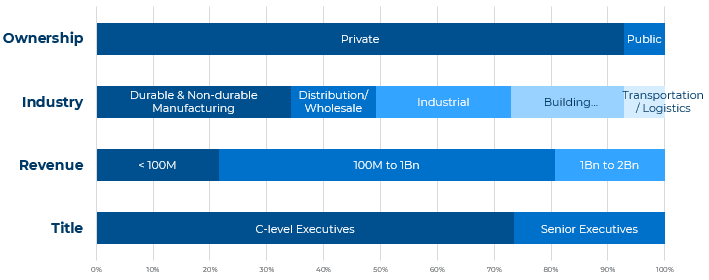
Feedback received was primarily from acquiring company executives, and most deals involved private equity investors.
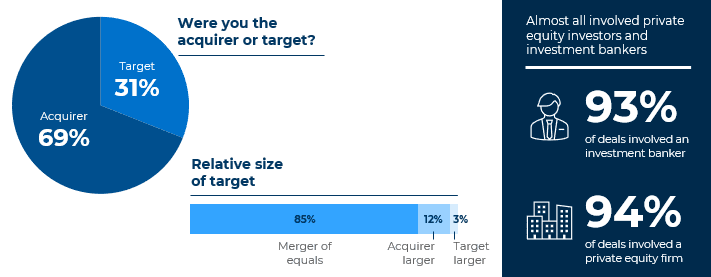
QUESTION: Given your recent M&A and integration experience, what letter grade would you give the integration of the companies overall?
While 50% of integrations could have received a better ‘grade’, 90% of executives making acquisitions feel their recent mergers ‘succeeded’ to a high degree.
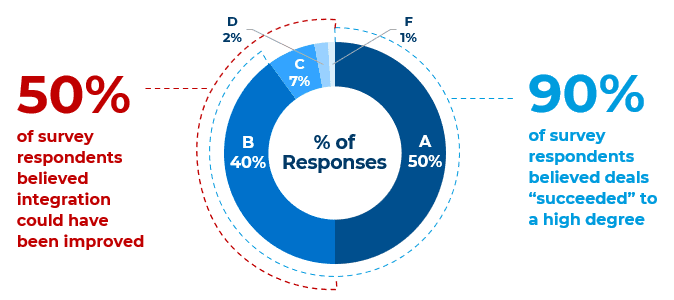
While 50% of executives surveyed indicated there was ‘room for improvement’, the old adage that ~70% to 90% of mergers fail simply isn’t true, at least not in the middle market.
QUESTION: What were the Top 3 value drivers of your most recent acquisition(s)?
Cost synergy was the primary value driver for middle market deals, with revenue/scale synergies a close 2nd.
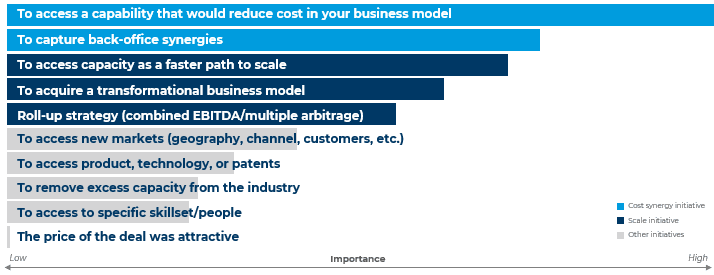
Questions: For each of the possible acquisition benefits listed below, how large were your expectations for each and did you achieve your targets after the integration was complete? How central was each to the deal thesis up front?
Executives expected more benefit from revenue vs. cost synergies, but revenue synergies were less likely to materialize.
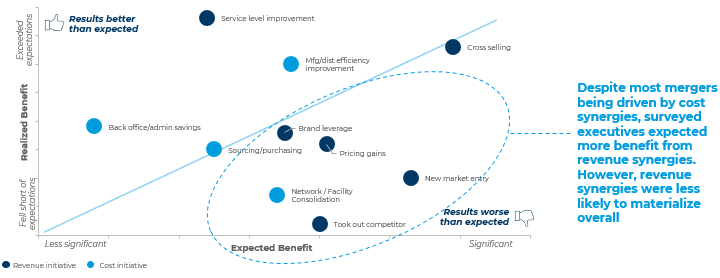
This is supported by secondary research suggesting that revenue synergies proved harder to realize. Cost synergies are a main value driver of deals, so the fact that 70% of deals are realizing expected synergies in this area isn’t surprising. But acquirers are falling short on revenue synergies which suggests that revenue synergy estimates are inflated, or integration efforts are more focused on cost vs. revenue.
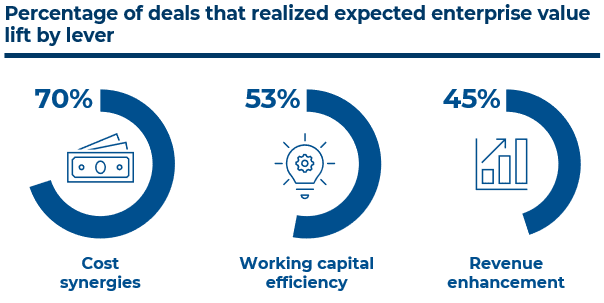
One of the largest cost-reduction opportunities in many mid-market deals ranked lowest amongst realized benefits.
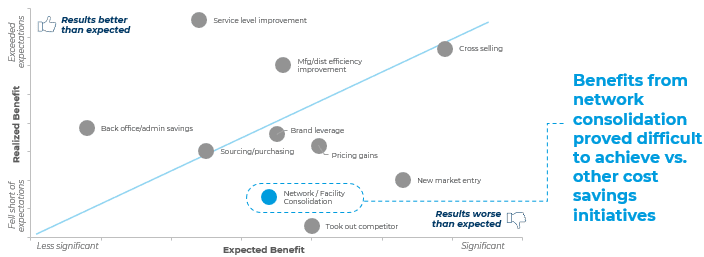
Question: For any internal resources used on integration, how comfortable were you with your own organization’s integration-specific skillset and their ability to develop and execute the integration plan for the following business functions?
Network consolidation was cited as the biggest skillset gap for internal resources supporting integration efforts, followed by sales and IT.

Question: Why were expected integration benefits not captured?
Unsurprisingly, a lack of strong integration process was cited as the most significant driver of PMI failure. Four of the top six drivers of ‘failure’ are planning and process driven. Success in M&A is often dependent on a structured merger process and plan, and the bandwidth to execute.
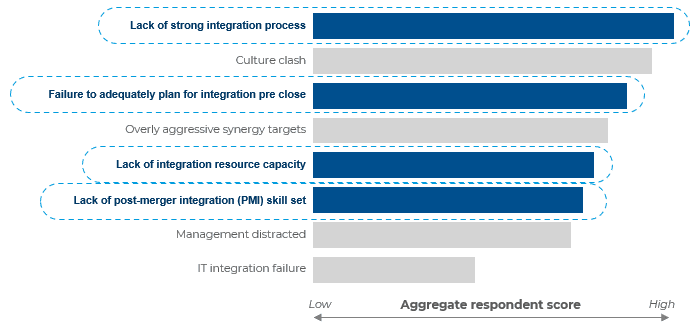
This too was supported by secondary research that found integration planning processes had a meaningful and direct impact on value creation.
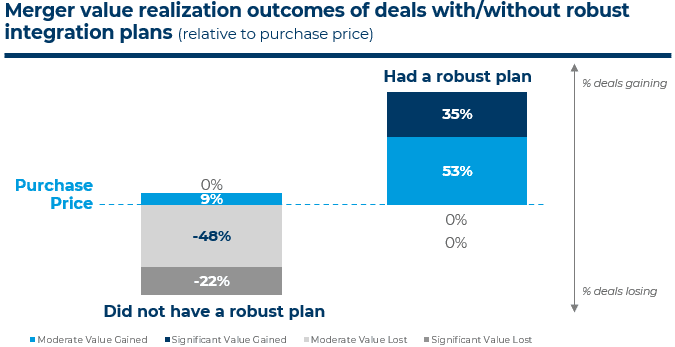
Unequivocally, we know that maximizing value capture in mid-market mergers relies on robust planning and adequate resourcing. Making sure you have the experience and capacity to execute, greatly improves your likelihood of success.
QUESTION: What were the primary resource(s) you used to manage the integration and were they dedicated to merger integration?
When it comes to resourcing integration teams, the results were mixed; ~50% of executives engaged 3rd party consultants.
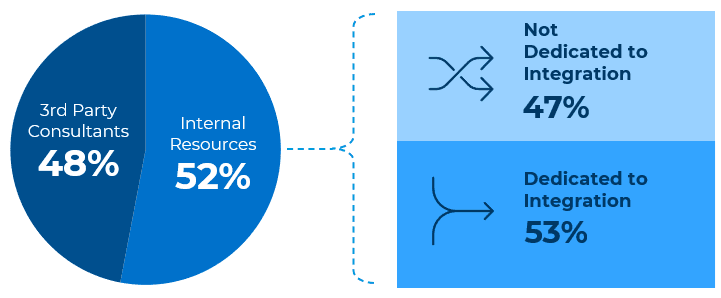
Question: Specifically, how did your 3rd party consultants help you during the integration process?
Overwhelmingly, when consultants were engaged, they helped capture unique value. 87% of executives were ‘satisfied’ with their decision to leverage outside consultants.
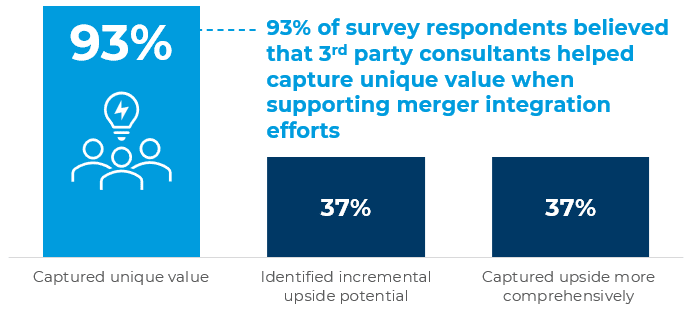
Question: Given your recent M&A and integration experience, what grade would you give the integration of the companies overall?
While internal resources often proved successful, 3rd party resources significantly improved integration success.
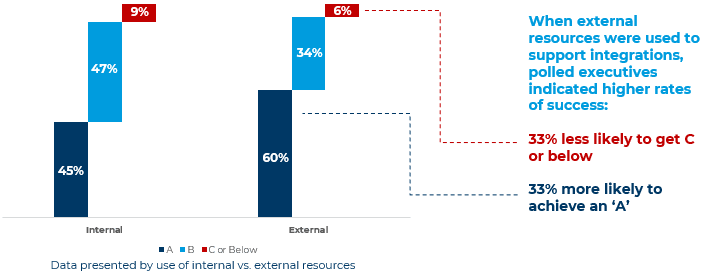
Question: How did 3rd party consultants alleviate risk?
Where 3rd party consultants were used, 96% of executives agreed that consultants also alleviated risks.
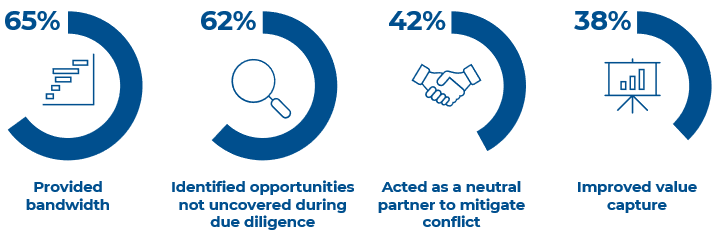
M&A valuations are hitting record highs, but many integrations leave value on the table. A strategic approach to post merger integration can maximize enterprise value creation.
